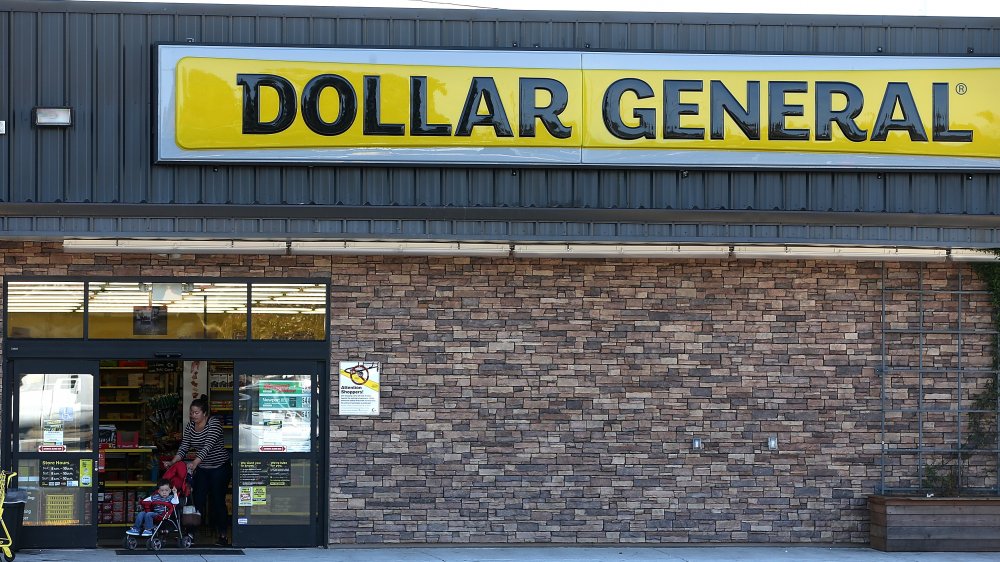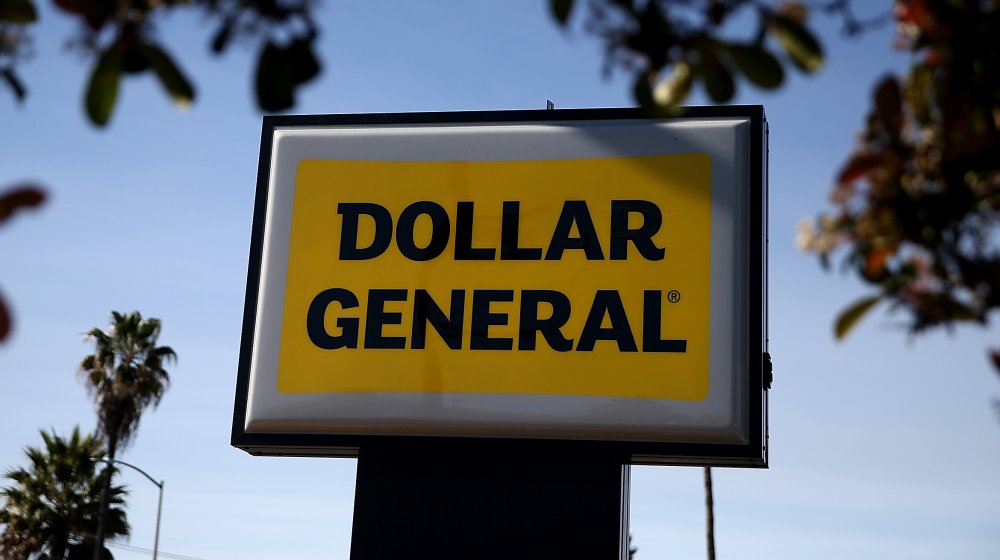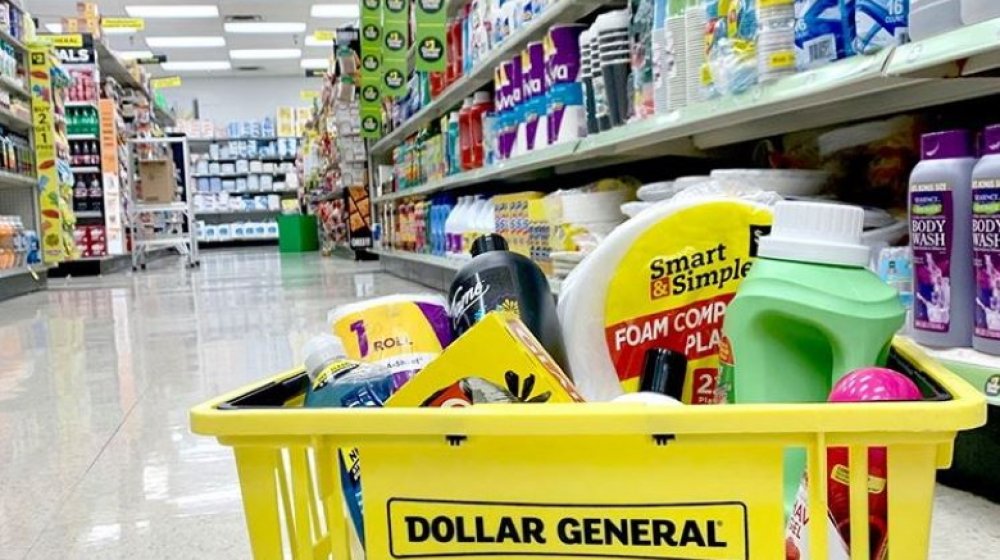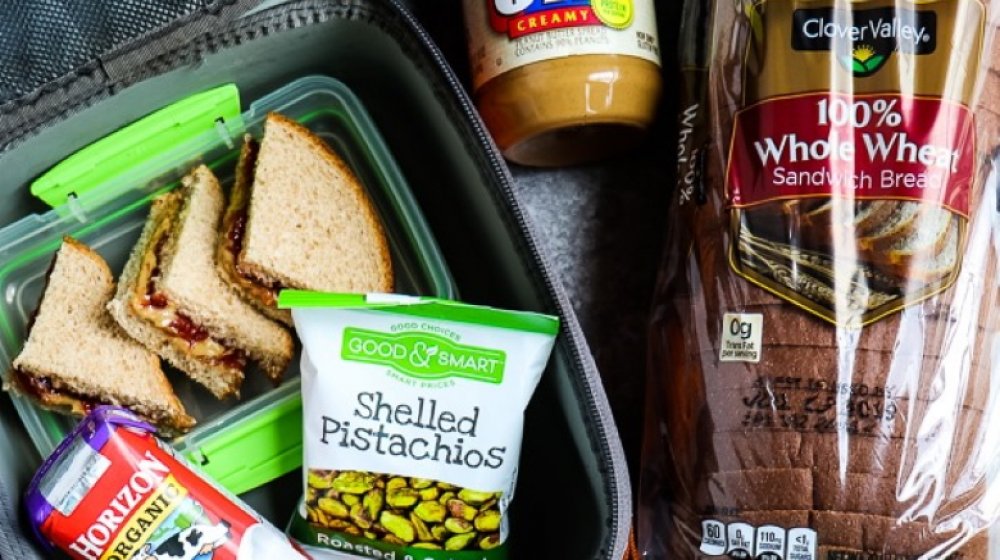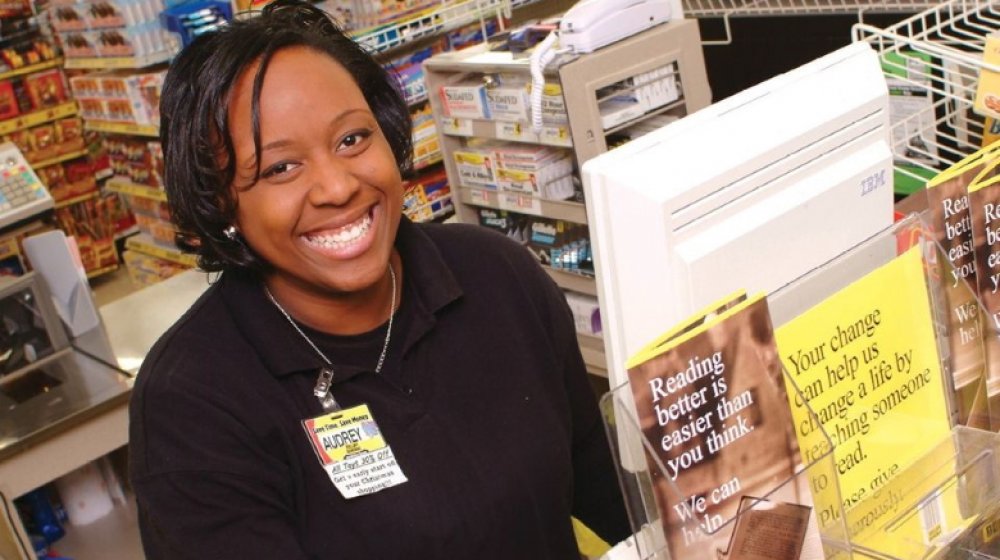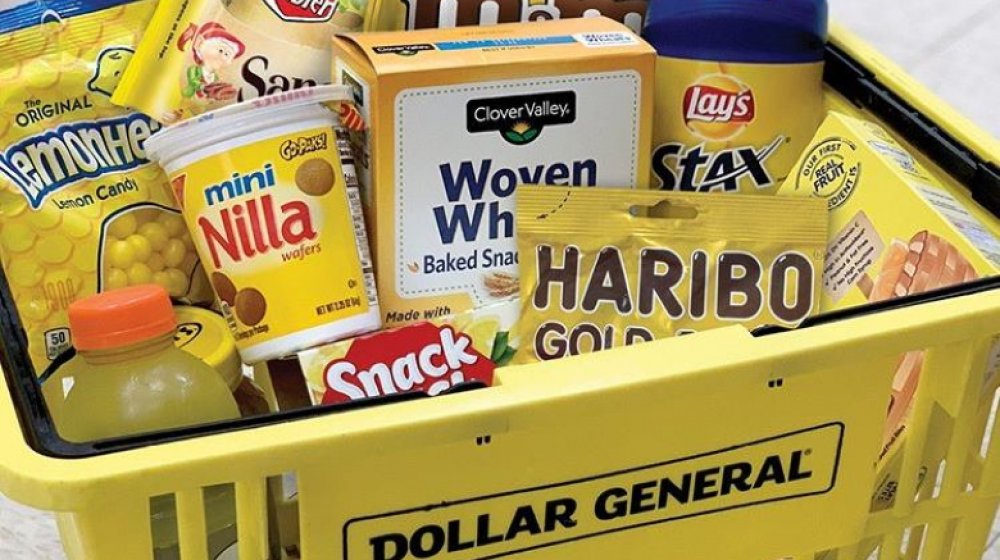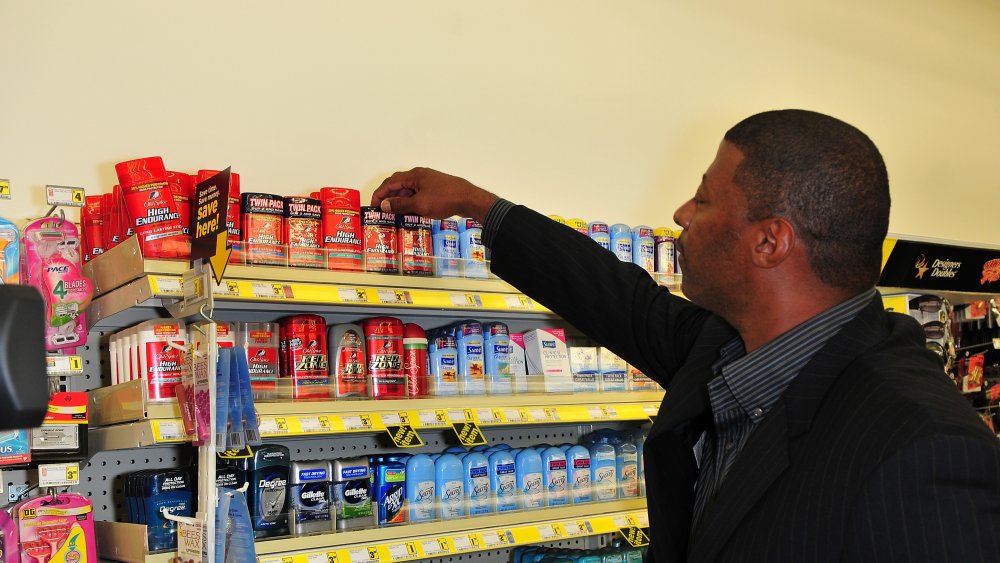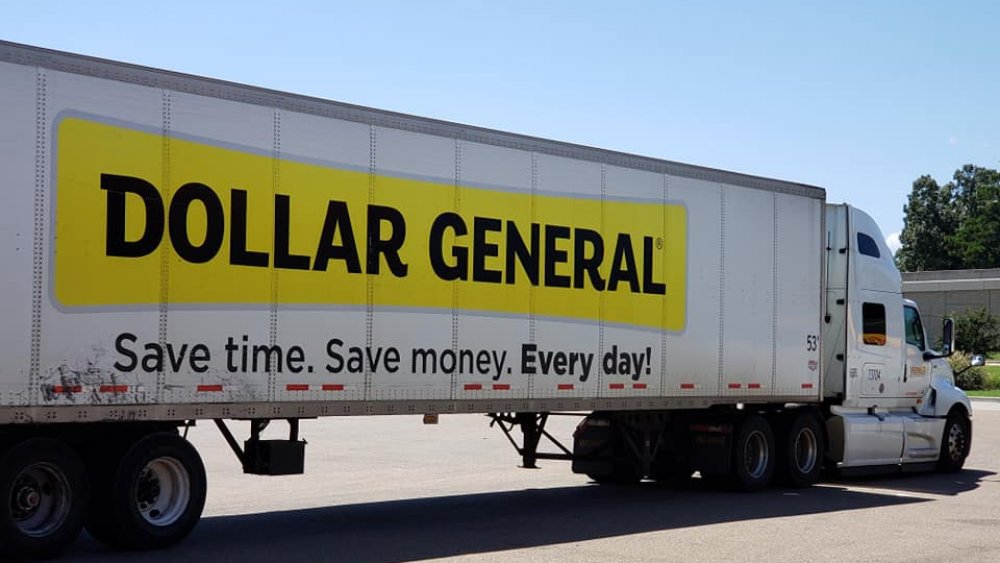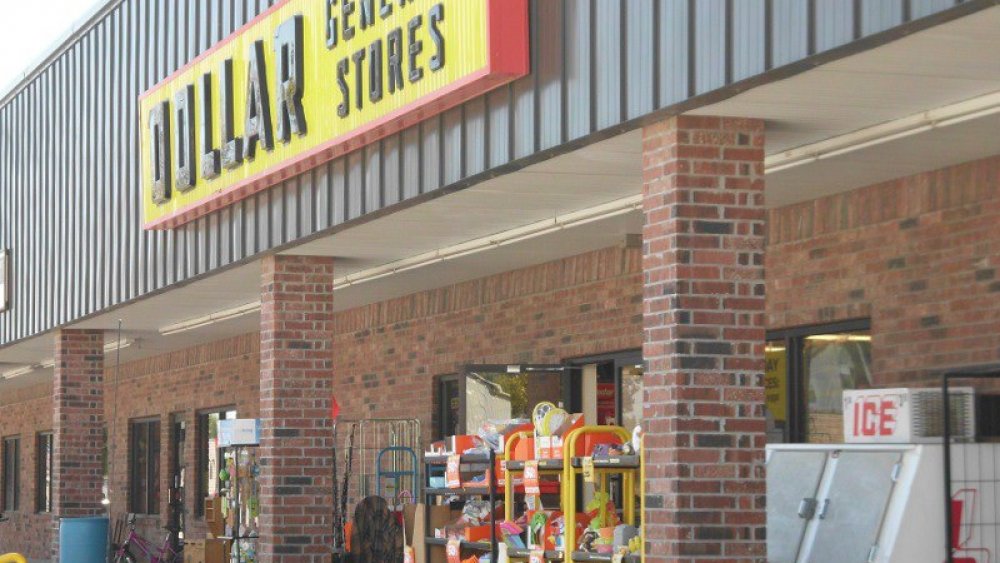How Dollar General Really Keeps Their Prices So Low
People flock to dollar stores for the fantastic deals and low prices. The seasonal merchandise sells out quickly and products tend to be regularly rotated, meaning visits are always an adventure. But it's not just bargain hunters that hit up dollar stores on a regular basis, eager to find a terrific bargain. Sometimes it's all a cash-strapped couple or bottom-budget family can afford for their basic staples. Shopping at a dollar store stretches that almighty dollar pretty far.
Dollar General is one such store that has enjoyed impressive growth even during an economic downturn and without jacking up the prices passed on to customers. According to the company's August 2020 fiscal report, Dollar General's net sales increased 24.4 percent and operating profits increased 80.5 percent to $1 billion from the same time last year. The company even opened 500 new stores, remodeled 973 stores, and relocated 43 stores in the first half of 2020, yet managed to keep its prices low and enticing to customers.
"Many of our customers have fixed or low incomes and generally have limited discretionary spending dollars," Dollar General said in its latest annual securities filing.
Dollar General offers customers prices that average 20 to 40 percent lower than similar products sold at grocery and drug stores. So just how does Dollar General keep their prices so low?
Dollar General thrives in food deserts
While it's not unheard of to see a Dollar General in an area with more high-end shopping, the company prefers to lease build property in a type of area commonly referred to as a food desert. A food desert essentially is a community or area where access to healthy, nutritious food is noticeably limited by factors like poverty or ruralness.
The ideal spot for Dollar General to lease or build is in rural areas where a big box retailer or grocery store isn't within 15 to 20 miles. The company notes (via CNN) that 75 percent of its retail locations open in towns with 20,000 or fewer residents. This prompts customers to make multiple visits, boosting the company's bottom line and allowing them to pass along cost savings to consumers.
Todd Vasos, Dollar General's chief executive officer, stated that the opening of a Dollar General store brings a "positive economic impact" to the area by creating new career opportunities and helping customers save money.
"What we look for is areas that are currently underserved today," Vasos stated at Dollar General's May shareholder meeting. "In many rural and in suburban locations, that's very true. And even in some urban locations we found there are food deserts."
Dollar General keeps things basic
The type of store Dollar General opens and operates also plays a pretty big role in keeping operating costs down for the business.
The traditional brick and mortar buildings are not flashy. In fact, they're very plain, and very simple — often with only metal siding and a brick base for the exterior and a stripped-down interior. If you've been to a Dollar General, you know they're nothing fancy inside, either. Rows of basic metal shelves line the inside and there are no perks or fancy décor, only simply flickering lights and aisle signs.
The stores also are considerably smaller than competitor Walmart with approximately 7,300 square feet (instead of Walmart's over 150,000 square feet). That scaled down presentation means the company is spending a lot less to open each store — and a lot less on monthly rent — and they can afford to pass those savings on to customers in the form of lower prices.
Dollar General sells fewer items
It might not make sense at first, but by carrying fewer items, customers actually save money in the long run. Dollar General states on its website that it doesn't "carry every brand and size, just the most popular ones." Dollar General stocks shelves with upwards of 12,000 products whereas Walmart, for example, carries 60,000 different items, Business Insider noted.
Offering a much smaller selection and buying in bulk allows the dollar store to be in control of its buying power so it can purchase popular items and commonly purchased goods at rock bottom prices, then pass those cheaper prices on to its customers. That's exactly what the often cash-strapped customer base of Dollar General needs.
However, sometimes those amazing deals for customers made popular by the store's purchase power means goods bought in bulk may have expired. It's important to look for an expiration date so that terrific deal doesn't become a money sucker.
Dollar General has a smaller staff
Not only does having fewer items on the shelves makes shopping more affordable for customers at the Dollar General, so does having a limited number of employees. Walk into a dollar store and you'll find one, maybe two cashiers up front and only one other person stocking shelves at a time. There's no greeter like Walmart has, or extra employees on staff helping track down items, operate layaway, sacking groceries and more.
By sacrificing the extra services big stores offer and slicing its employee base drastically, Dollar General can keep its operating costs low and pass those savings on to its customers. It makes perfect sense that a much smaller store with a limited product supply would have much fewer staff on hand.
When the focus of dollar stores like Dollar General is to offer customers better prices and impressive deals, operational costs must stay low.
Dollar General sells private label products
Walmart may have its own Great Value brand but Dollar General has the Clover Valley food line and other private labels. These comparable generic products usually knock cents up to a dollar off the purchase price of the virtually identical or similar name brand product, saving customers quite a bit of ca-ching.
Dollar General's Clover Valley brand has upwards of 40 product lines including food and household products. The Dollar General's private labels run the gamut from candy, beverages, and food to household items, health and beauty care, baby products, craft and office supplies, and more. The chain is able to produce these at much cheaper costs to them and then establish their own price margin, passing those cost savings on to the consumer.
Marketing costs for a private brand like what Dollar General carries are either minimal or nonexistent, which transfers into significant cost savings to the retailer, a portion of which is also passed along to the consumer in the form of lower prices.
Dollar General sells smaller sizes of products
Dollar General opts to sell small and single quantities of items to help keep costs low for consumers. Not all shoppers can afford to go to Sam's Club or Costco and buy an armful of toilet paper, and purchasing pounds of produce means those apples or bananas would go to waste and waste money. Most consumers appreciate the option to buy single packaged items at a price that fits their budget instead of forking over quite a bit of cash for a bigger quantity item.
These single packaged items sometimes are priced more affordably than a two-pack bought at a big box store, for example; however, pay close attention to the product size you're purchasing. Many are ever so slightly smaller, so do the math and make sure it's still a good deal per ounce or per quantity versus at the bigger grocery store. Those smaller items may be cheaper, but that doesn't always mean they're a deal.
Dollar General manages its own truck fleet
The company is always looking for ways to cut costs, including in its supply chain, which it can pass on to shoppers. Sometimes cutting out the middle man boosts a company's bottom line and Dollar General did just that. The company aimed to expand its private fleet in order to control shipping costs, improve delivery times, and push efficiency, while ultimately offering shoppers overall savings.
By the end of 2018, Dollar General expanded its private carrier fleet from 80 trucks to 200 in just one year, lessening the impact of third-party carrier price spikes that take a bite out of a budget and is often passed on to the consumer. This isn't something every store can do for its customers.
Outsourcing for transportation also forces a business to rely on a third party and relinquish control of how much is spent on the fleet. By owning and managing their own fleet, Dollar General is able to control the entire transportation chain from warehouse to store, cutting additional costs that can be passed on to shoppers, something they're sure to appreciate.
Dollar General promotes coupon use
When pairing Dollar General coupons with items highlighted in the weekly advertisement, amazing deals can be snagged — in fact, it's hard to believe they can offer prices this low. So how does it work?
According to the company, coupon stacking is allowed of up to two coupons total per item. That means one manufacturer's coupon and one Dollar General coupon can both be applied toward the purchase price of one item. But two or more Dollar General coupons can be stacked for most purchases. Even sweeter is if a coupon's value is worth more than the price of an item, the remaining value of the coupon simply will be applied to the total balance of the transaction.
Since manufacturers reimburse Dollar General for the coupons used for its products, the company is able to pass that savings on to customers. Dollar General adding on its own coupons is designed to entice customers to return and use both coupons at its store rather than elsewhere.
